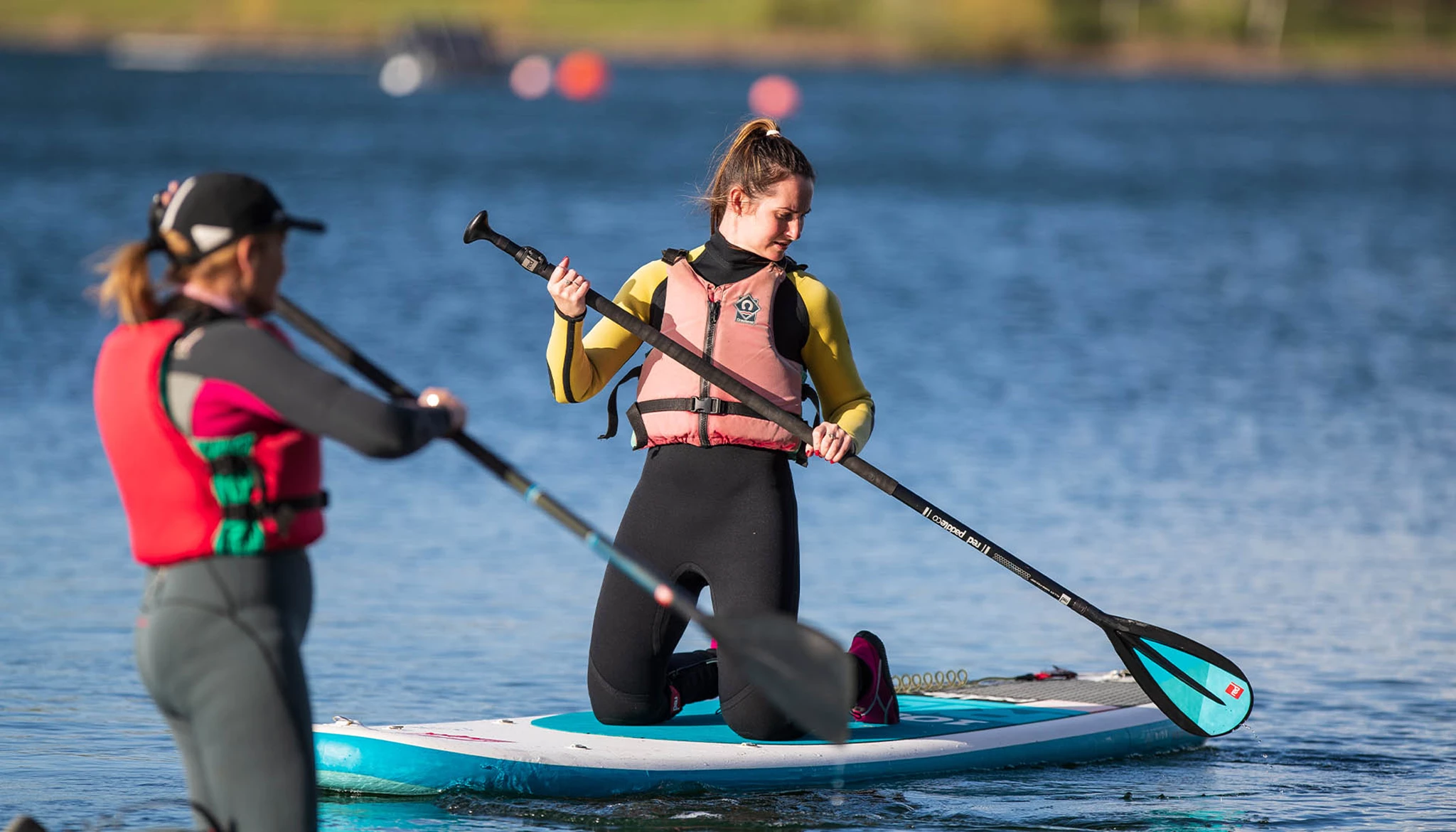Paddle boarding has become a popular activity for people of all ages and fitness levels. But is it really a good exercise? Today we’ll explore the fitness benefits of paddle boarding and why it’s considered one of the best total body workouts out there.
Whether you’re a beginner or an experienced paddler, you’ll discover how paddle boarding can help you improve your balance, strength, and endurance. So, if you’re looking for a fun and effective way to stay fit, keep reading to learn why paddle boarding might be the perfect exercise for you.
Contents
Is Paddle Boarding Good Exercise?

I often get asked, “Is paddle boarding really a good exercise?” and the answer is a resounding YES! Paddle boarding is not only a fun and relaxing activity, but it is also one of the best workouts out there. People of all body shapes, sizes, and ages are engaging in stand-up paddle boarding as a fun fitness activity.
When you’re out on the water, paddle boarding engages your entire body, making it a complete body workout. Whether you’re paddling or just balancing on your board, you are working on your balance, strength, and endurance. Your core muscles are especially targeted, but it doesn’t stop there – your toes, legs, back, shoulders, arms, and neck all work together to keep you stable and moving smoothly.
Benefits of Paddle Boarding as Exercise:
Paddle boarding, also known as stand-up paddleboarding (SUP), offers a plethora of benefits, making it an excellent choice for exercise. Here’s why:
1. Cardiovascular Health:
- Elevated heart rate: Paddling engages large muscle groups, raising your heart rate and improving cardiovascular health.
- Increased endurance: Maintaining a steady pace during your paddle strengthens your heart and lungs, boosting stamina and endurance.
- Calories burned: Paddle boarding is a calorie burner, helping you reach your weight management goals.
2. Full-Body Workout:
- Core strength: Balancing on the board continuously engages your core muscles, leading to increased strength and stability.
- Muscle engagement: Paddling activates muscles in your arms, shoulders, back, legs, and torso, providing a comprehensive workout.
- Improved flexibility: Reaching for strokes and maintaining balance enhances overall flexibility and range of motion.
3. Low-Impact Exercise:
- Joint-friendly: Unlike running or high-impact sports, paddle boarding is gentle on your joints, making it suitable for people with joint issues or recovering from injuries.
- Reduced stress on bones: The water supports your body weight, minimizing stress on your bones and joints.
- Safe for all ages: Paddle boarding can be enjoyed by people of all ages and fitness levels.
4. Mental and Social Benefits:
- Stress reduction: Being outdoors in nature and engaging in physical activity promotes relaxation and stress relief.
- Improved mental well-being: The rhythmic movement of paddling can be meditative, and the endorphin release from exercise boosts overall mood.
- Social interaction: Paddle boarding with friends or joining group classes provides opportunities for social interaction and fun.
Paddle Boarding vs Other Forms of Exercise:

In comparison to other traditional forms of exercise, paddle boarding offers unique benefits that make it a fantastic choice for fitness enthusiasts. Let’s take a closer look at how paddle boarding stacks up against running, cycling, and swimming.
1. Paddle Boarding vs Running:
Running is a popular cardiovascular exercise that can help improve endurance and burn calories. However, it can be high-impact and put stress on the joints, leading to potential injuries. In contrast, paddle boarding is a low-impact activity that provides a full-body workout without putting excessive strain on your joints. It engages the muscles in your arms, shoulders, back, core, and legs, while also offering a low-risk workout option.
2. Paddle Boarding vs Cycling:
Cycling is another common exercise choice for individuals looking to improve their cardiovascular health and build leg strength. While cycling does provide the benefits of a lower-body workout, it primarily focuses on the legs and doesn’t engage the upper body as much. Paddle boarding, on the other hand, activates both the upper and lower body muscles, offering a more balanced and comprehensive workout. It’s a great way to strengthen your core, improve balance, and work various muscle groups simultaneously.
3. Paddle Boarding vs Swimming:
Swimming is renowned for its cardiovascular benefits and low-impact nature. It’s a fantastic full-body workout that is gentle on the joints. Paddle boarding offers similar advantages, providing a low-impact workout that engages multiple muscle groups. Additionally, paddle boarding adds an extra element of stability and balance training, as you navigate the water while standing on the board. This combination of cardio, strength, and balance makes paddle boarding a unique and effective exercise option.
So, why not give paddle boarding a try and experience the many health and fitness benefits it has to offer?
FAQs:
Is paddle boarding a good workout?:
Delve into the physical demands of paddleboarding and its effectiveness as a full-body exercise.
What muscles does paddle boarding work?:
Explore the muscle groups engaged during paddleboarding and how it contributes to strength and toning.
Can beginners benefit from paddle boarding as exercise?:
Discover how beginners can embrace paddleboarding for fitness and the gradual impact on overall health.

Hello, I’m Ravindra. Over the years, I’ve immersed myself deeply into the world of fitness and health, transforming both my body and mind. Writing has allowed me to share my journey, insights, and expertise with those just starting out and seasoned fitness enthusiasts alike. Beyond just routines and diets, I believe in inspiring others to adopt a holistic approach to well-being.

Hello, I found your article very interesting! I’m actually the founder of 2 fitness programs inspired by paddle boarding.
One is for swimming pools/open waters called AQUA STAND UP® (www.instagram.com/aquastandup1) and the other one is for dry land and is called B-BOARD WORKOUT®. Feel free to check our workouts! They are fun, safe and effective!
Eric